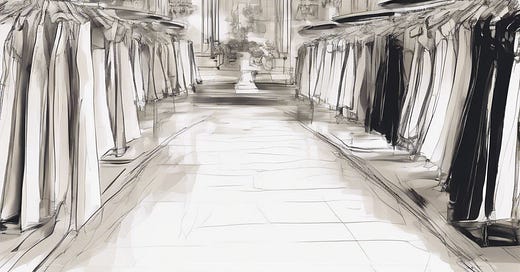The Business of Luxury: Why Some Fashion Brands Thrive and Others Fade
Luxury is more than just a price tag—it’s an identity, a perception, a carefully crafted dream. The world’s most iconic fashion houses don’t just sell clothing; they sell status, heritage, craftsmanship, and culture. But while some brands remain timeless, others disappear into obscurity.
Why do some luxury brands stand the test of time while others fade into irrelevance? What separates the Chanel and Hermès of the world from brands that once held prestige but have now lost their luster? The answer lies in business strategy, cultural relevance, and an evolving understanding of what luxury means today.
At Orm Muse Collective, we’re not just looking at fashion as art—we’re examining it as a business. Let’s break down the factors that determine whether a luxury brand thrives or fades.
Heritage vs. Hype: The Luxury Balancing Act
The most successful luxury brands understand that heritage is power, but reinvention is necessary. They honor their legacy while evolving with the times.
Brands That Get It Right:
Hermès: Never chases trends, remains rooted in craftsmanship, and controls supply to maintain exclusivity.
Chanel: Balances its classic codes (tweed, pearls, the quilted bag) with modern innovation, never compromising on brand DNA.
Dior: Consistently reinvents its signature looks (the Bar Jacket, the Saddle Bag) while embracing new creative directors who add fresh perspective.
Where Some Brands Go Wrong:
Some chase trends too aggressively, losing their brand identity (see: once-iconic brands struggling to find relevance).
Others become too reliant on celebrity culture, forgetting that true luxury is about craftsmanship and not just social media buzz.
Takeaway: The key is in evolution without losing the core essence—luxury is about lasting impact, not fleeting hype.
The Power of Scarcity & Exclusivity
Luxury is built on desire, not accessibility. The moment a brand overproduces, discounts heavily, or floods the market with logo-heavy designs, it risks diluting its exclusivity.
Winning Strategies:
Hermès: Keeps the Birkin and Kelly bags ultra-exclusive, creating a perception of unattainability.
Rolex: Controls distribution so tightly that buyers must wait years for certain models.
Bottega Veneta: Removed its social media presence for a while, making the brand feel more elusive and high-status.
Where Brands Lose Their Edge:
Over-licensing their name (think of brands that slap their logo on everything).
Excessive discounting, which signals to customers that the product isn’t worth its original price.
Too many collaborations—if done carelessly, it can feel more like a cash grab than an artistic choice.
Takeaway: The strongest luxury brands understand that exclusivity drives demand. When something is scarce, it becomes more desirable.
Keep reading with a 7-day free trial
Subscribe to Orm Muse Collective to keep reading this post and get 7 days of free access to the full post archives.




